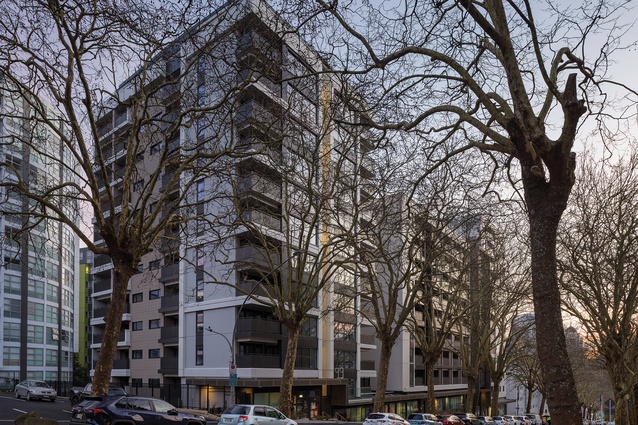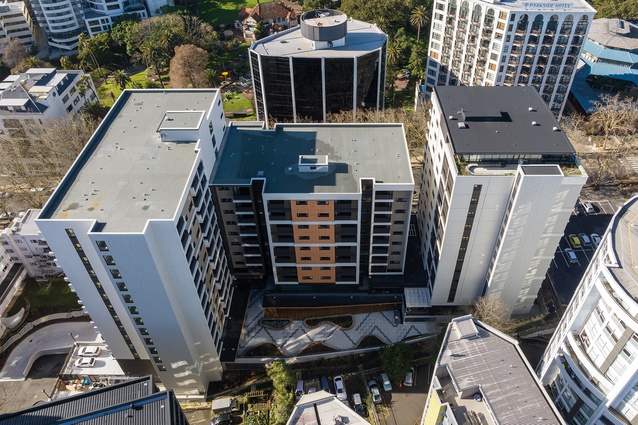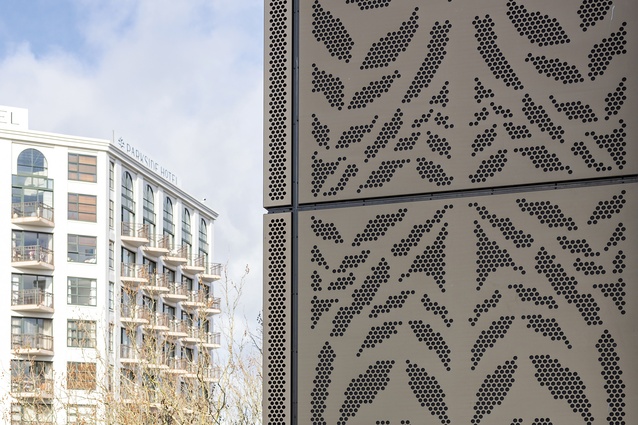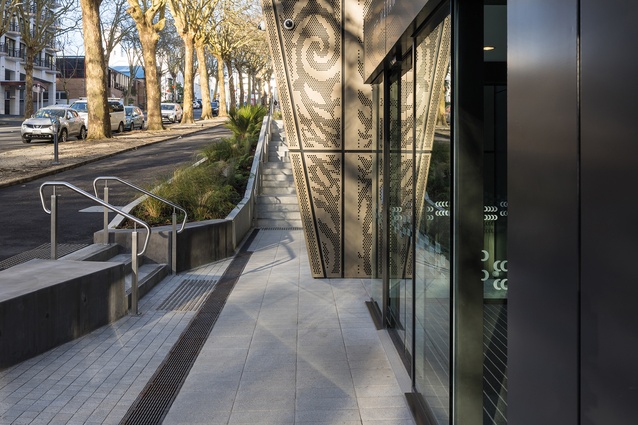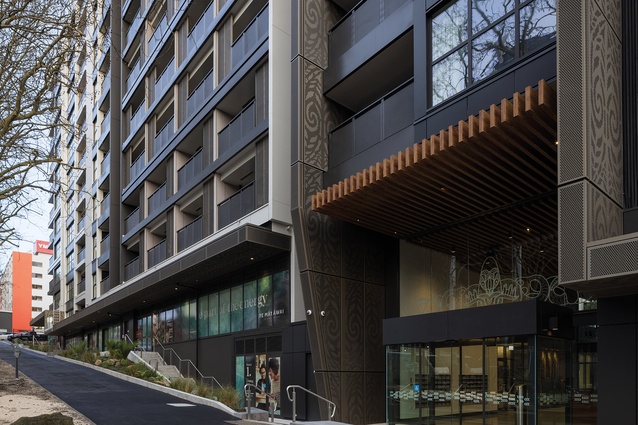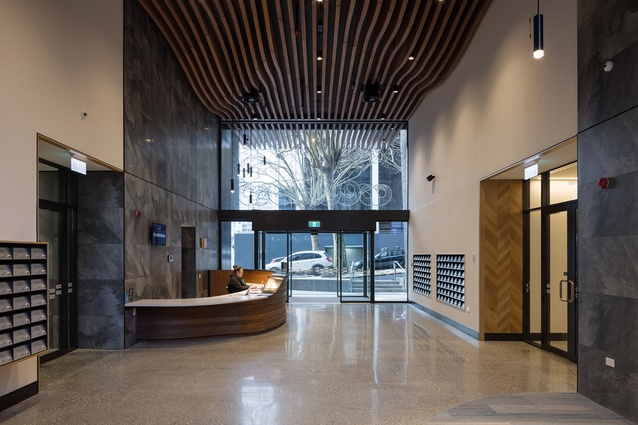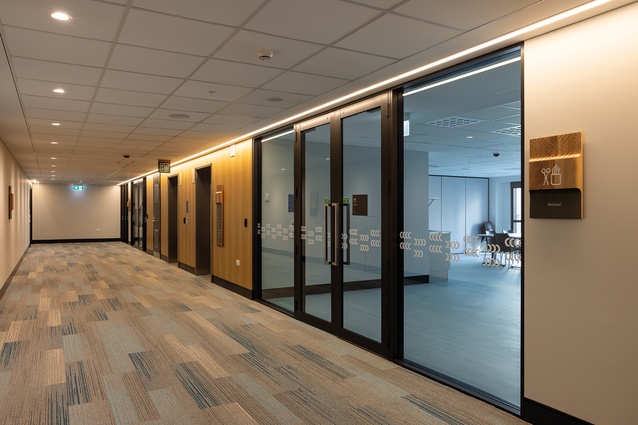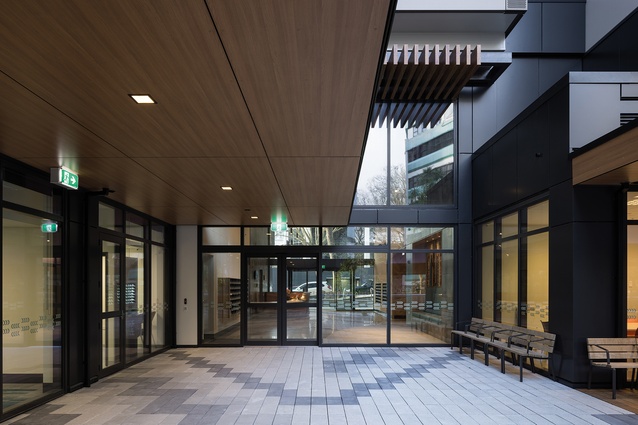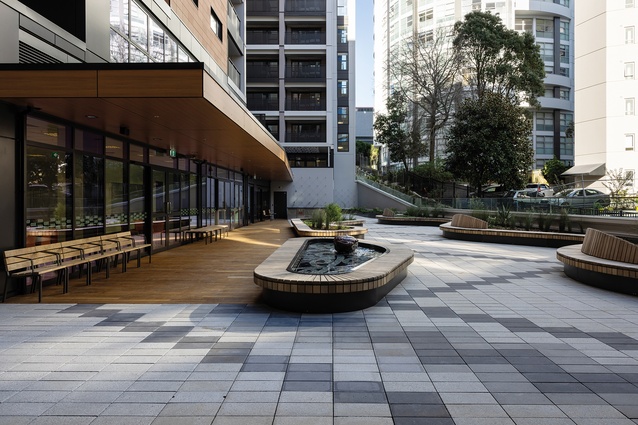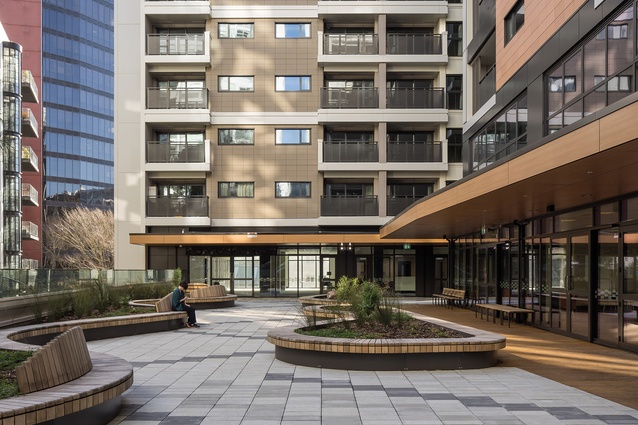Warm walls and good manners
This is one of the new breed of medium- to-high-density social housing but you wouldn’t know it.
In an age of spectacular World Architecture Award winning adjective-overloaded architecture, you could walk right past this building — and I think that’s a good thing. I learned the hard way that most social housing tenants don’t actually want something superarchitectural; they just want what everyone else has.
I worked on Manning Mitchell’s state houses at Wiri, South Auckland, in the late 1980s and was responsible for some dazzling colour schemes you could see from the southern motorway. They were repainted beige a few years later. Rewi Thompson did some housing nearby that had more architectural attention but fared less well in tenant popularity — it was eventually demolished. When doing final inspections of the Manning Mitchell houses, I received lots of tenant feedback: Why is the colour of my living room the same as the neighbour’s toilet? How come the neighbour got a garage and I only got a carport? They seemed suspicious of variety and architectural innovation and may have been happier if every house had been identical. And identical as well to the non-state-house suburban blandness that I considered a boring blight on the broader area.
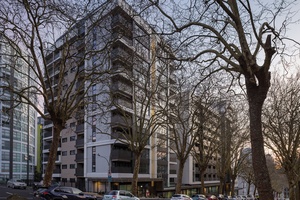
Te Mātāwai is in central Auckland’s Greys Avenue, a street that is no stranger to apartment buildings: old and new, private and public. The Lower Greys Avenue Flats were an early example of the first Labour government’s use of modernism in the construction of medium-density housing blocks. The Upper Greys Avenue block was later, and different in style. It was still modernist but utilising more steel and glass, and laid out as maisonettes: stacks of two-storey apartments. I paid a last visit to these before they were demolished, and they had been allowed to deteriorate into quite a rundown state.
Just as with other modernist social housing of heritage value, there was an argument for adaptive re-use; the University of Auckland, for example, acquired the Symonds Street Flats and renovated them for accommodation of a more middleclass student clientele. Victoria University of Wellington could do the same with the Gordon Wilson Flats.
There was also a case, if Upper Greys Ave was too far gone, to strip the structure back to its bones and build a new development off that. This is becoming increasingly common, as we get serious about climate change, in order to reduce waste and carbon footprint. It would be an interesting exercise to see what of Te Mātāwai’s new accommodation, facilities and services could have fitted and worked successfully in an old, seismically upgraded carcass. This new building is certainly much bigger with more going on. In any case, that’s academic, as we say in the university trade, because Upper Greys Avenue is gone; so, let’s see what Te Mātāwai has brought us.
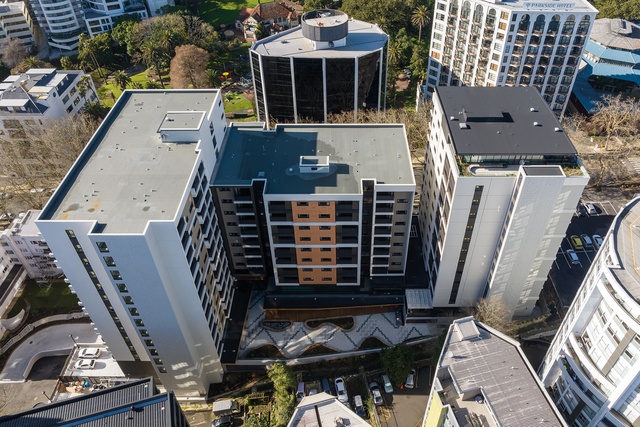
What we do know now about housing for people with significant problems is that they need ‘wraparound’ assistance onsite so, apart from apartments, Te Mātāwai has on-site support services around the clock. These are also available to the 50 Kāinga Ora clients next door in Lower Greys Avenue.
This building is the biggest single-site development that Kāinga Ora has completed in the city for many years and is mostly ‘supported housing’, so not just apartments but also a suite of services, shared facilities and so on. What surprised me, though, is that, although there are about 200 state housing flats, there are also 76 rentals that will be available to the general public. I guess this is why we are starting to use the words ‘social’ and ‘public’ more than ‘state’; this sort of development, although very much targeting a range of central-city people with problems, is also aimed at affordable housing for a broader range of renters in a pilot of mixed tenure.
“What surprised me, though, is that, although there are about 200 state housing flats, there are also 76 rentals that will be available to the general public. I guess this is why we are starting to use the words ‘social’ and ‘public’ more…”
The former Labour government came to power with an aim for its housing developments to be a third traditional government rentals, a third affordable first home buys and the rest for purchase at market rates. It found out that the last two were pretty much the same thing so, now, developments are mixed more along the lines of Te Mātāwai’s social recipe.
The building stretches up the street roughly north-east to south-west and is split into three towers between nine and (let’s hope lucky-for-some) 13 storeys high. The southern, slightly higher one contains the 76 market rentals, accessible through a separate lobby and with separate common spaces. The street frontage also has four retail spaces and care will be taken in the leasing of these; a local dairy gets a yes but not a vape shop, of course. Let’s start our walk-through in the main ‘state housing’ part of the building.
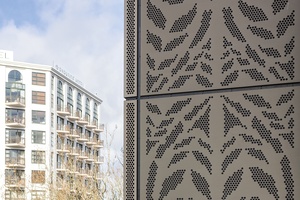
The entrance lobby cuts right through the structure to the north-west and to a broad, sun-soaked terrace so it is a well-lit and welcoming space, enhanced by artworks and architectural features sourced and created in association with Ngāti Whātua Ōrākei, who also created a narrative that informed the design of the building.
A reception counter to one side sits in front of support services offices and around the terrace are multi-functional and common spaces, some of which will be available for public use. This is a similar strategy to that of the City Mission’s HomeGround (reviewed May 2022), that includes a street to street through-site link. The terrace here gives the place the ambience of a backpackers rather than something more institutional, with plenty of spots for socialising or chilling on your own to the sound of trickling water. There is a communal dining area, a recreation room, computer and crafts rooms, and so on. Because the site slopes in two directions, this terrace is really more of a podium with carparking below.
Further uphill, dug into the slope, there is bike parking and a communal laundry, then, further up again, Kāinga Ora offices. The accommodation above these levels is several storeys high and spread over two towers of the building. There is a mix of studios and one-bedroom apartments, all fully furnished down to cutlery in the drawers. A number are also specifically designed for wheelchair users and about 60 per cent are either accessible or universally designed, recognised with Lifemark ratings of 3 or 4.
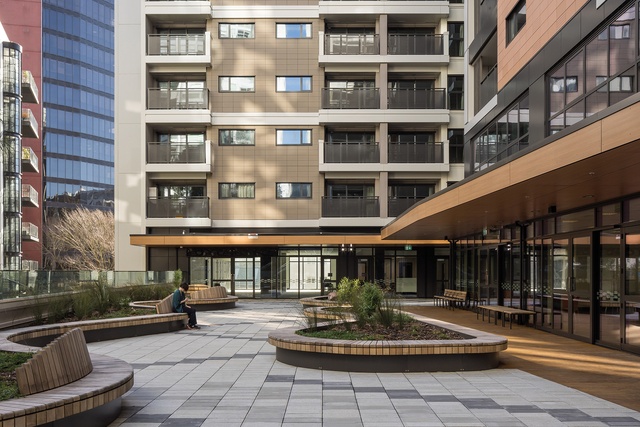
At the other end of the site is the third tower, intended for market rentals and accessed through a separate entrance. Here, there is a mix of studio and one and two-bedroom apartments. The whole building has a Homestar rating of 7. The common spaces crown the building in this section, with two multi-purpose rooms, kitchen, toilets, decks and roof gardens.
I’d live here. It’s a big building with a complex brief on a sloping site but it’s well planned and finished. And there is technical innovation, too; the structure has warm walls and roofs, a concept common in Europe but not here. This doesn’t mean the walls are heated but that the insulation is placed more towards the cladding side than the lining. Think of it as like putting on a puffer jacket to keep warm, rather than a fleecy vest. The dew point is moved to the outside, just behind the cladding and, if moisture accrues here, it can exit in the same way as rain would after it has entered a cavity behind the cladding.
“I’d live here. It’s a big building with a complex brief on a sloping site but it’s well planned and finished. And there is technical innovation, too; the structure has warm walls and roofs, a concept common in Europe but not here.”
Back to where I began: the external appearance of the building is nothing extraordinary and I think that is a good thing. I am well acquainted with HomeGround and the private developer Ockham’s work in the ‘missing middle’ market of medium-density apartments.
You can think of Te Mātāwai as a combination of the two in scale and quality of thinking but, unlike those, it is not as visually conspicuous. Architecturally, it doesn’t stick out and its good-mannered appearance fitting into the street and surroundings means it won’t be characterised as ‘that state house place’. More than 100 locals at a recent open day had a look around and gave it the thumbs up, too. It is another good building in a diverse community where a range of people, not too different from you and me, will live.


